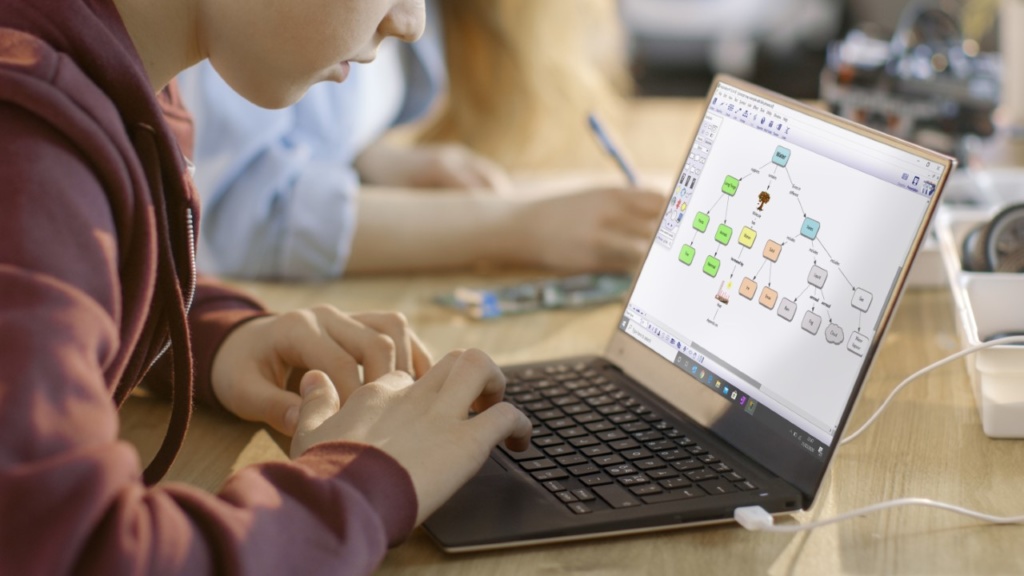
Brainstorming is something I’m sure we’ve all done, as I did to plan this article. It involves getting out of our heads the ideas and information we know about a subject so that we can sort it out and organise it into a coherent structure.
It is a process rather than an end it itself and can lead to several different outcomes. In my case a ‘Thought Web,’ a visual means of connecting the things I wanted to include before ordering them into a narrative thread.
At other times I might have used the same process to achieve a different result, a Mind Map or Concept Map, for instance. Both useful, and sometimes referenced in ways that suggest that they are interchangeable, although, in fact, they are quite different. They have common elements, such as creating links between ideas, and the use of colour to distinguish and to differentiate those links, as well as a theoretical basis that is underpinned by ‘Constructivist’ educational theories. This is the philosophy that suggests learning is a process of constructing a mental jigsaw that is constantly changing as we fit each new piece of knowledge into place.
A Mind Map can be seen as an external representation of that process, as a person develops an idea, jotting down thoughts – as single words – that flow from one another in diverse directions. Images can help to anchor those ideas and their connections, both on the page and in our heads. Generally, a Mind Map can be seen as a tool generated by an individual.
That might also be true of a Concept Map, where connections are made to understand relationships. However, a Concept Map is not always developed by an individual, it might be created by someone else and given to the learner as a guide to aid their understanding. Whether this is a teacher to map out the subject being learnt, or by a group sharing what they collectively know.
Whichever outcome is being sought, there are different approaches that can be used. Pencil and paper is possibly the most accessible, with a fistful of coloured pencils and maybe some Post-it notes if you want to provide flexibility in arranging ideas.
However, technology can offer greater diversity in both representation and organisation. Software such as Inspiration 9 can not only create both Mind Maps and Concept Maps quickly and easily, but it also means you can add links from the internet, images, from online or from your device, and annotate it with pop-up notes. There is also the option to have the map automatically formatted into a diagram, or a hierarchical list, that you could use to structure a piece of work.
In a classroom Concept Mapping offers many benefits as a way of working for all learners, but particularly those with special educational needs and disabilities (SEND).
At the start of a new topic, perhaps at the beginning of the term, the classroom teacher can share with the class the scheme of work, presented diagrammatically as a Concept Map, and the way in which it will be broken down over the weeks. It then becomes a tool for learning that is returned to regularly so the class can appreciate what has been covered, what is coming next, and how it all fits together.
With a resource such as Inspiration 9 the different branches of the map can be shown separately so you can both provide an overview of the whole topic and isolate the area under study. It can also be re-visited regularly as a revision aid, shared for individuals and groups to make their own notes, and even printed out to either hang on the wall as a constant reference, or to be put into books for individual study.
Concept Mapping is essentially a visual activity, which benefits those who may have language difficulties, but also, by providing a structure, it can help those who struggle to organise their ideas. Whilst this may be especially true for dyslexic learners, it will help any of those who find it a challenge to make connections and construct their own knowledge jigsaw. The use of images, including symbols, helps to reinforce ideas, and act as a prop for those struggling with literacy.
It is an approach for teaching, as a means to structure lessons, and for learning, as a way of cementing children and young people’s knowledge and understanding. A straightforward, yet flexible and powerful, way of working. www.inspiration-at.com
Register for free
No Credit Card required
- Register for free
- Free TeachingTimes Report every month